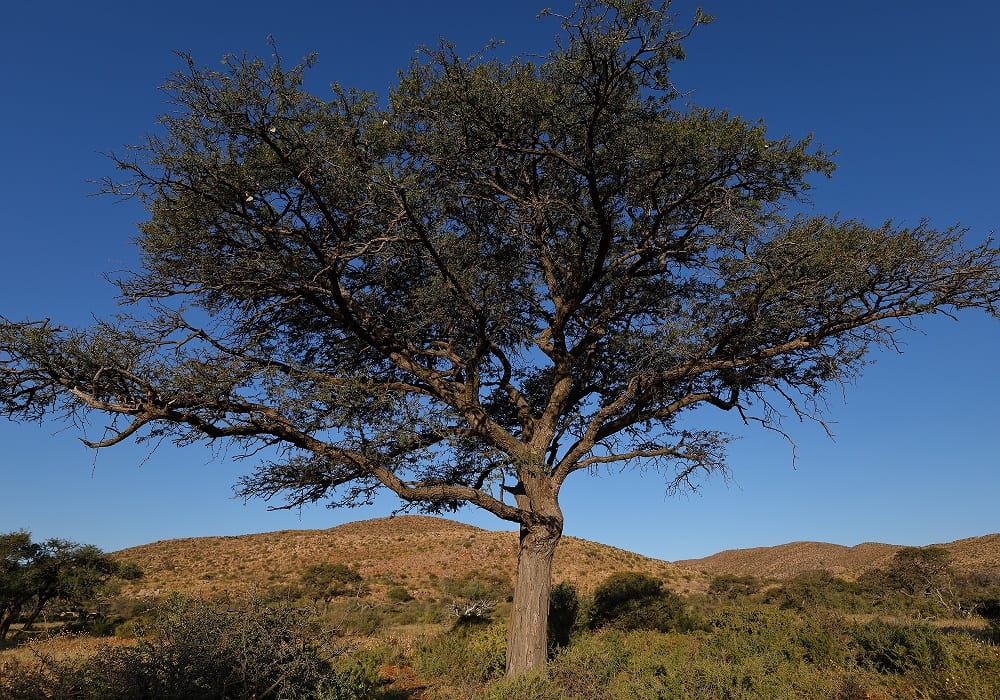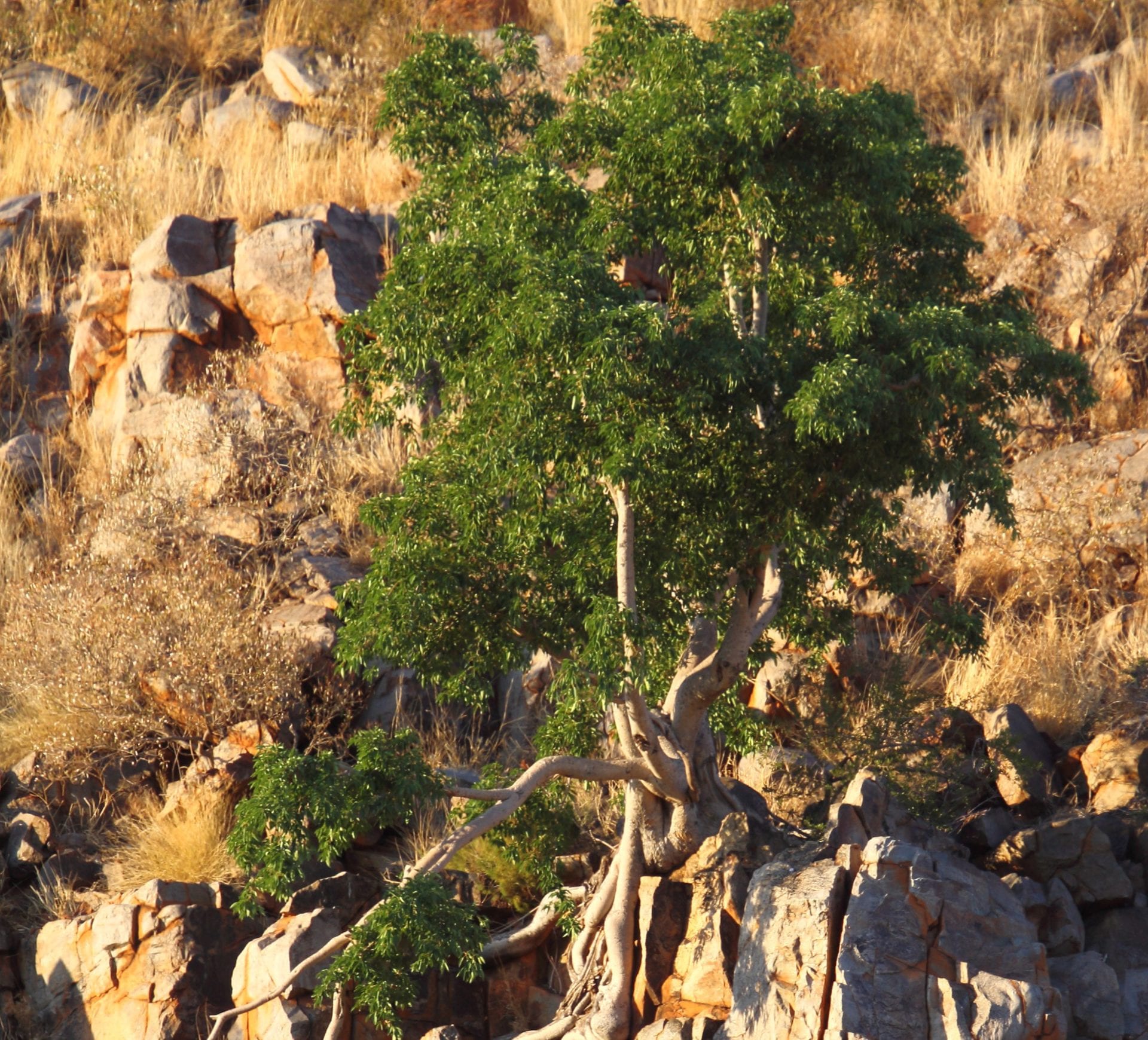THE HABITATS OF TSWALU
Broadly speaking, Tswalu includes five major habitats that have arisen primarily around the Korannaberg Mountains as a result of the windblown sands that comprise the Kalahari as we know it today.
Bushveld
The Bushveld (also referred to as Eastern Kalahari Bushveld) is found in and around the Korannaberg Mountains. The eastern areas of Tswalu receive a slightly higher rainfall than the western reaches of Tswalu and this is reflected in the vegetation. The Bushveld is flatter than the dune areas and comprises open to dense tree savanna with some grassy plains. Typical trees include camel thorn and shepherd’s tree.

Plains Shrubveld
As with the Bushveld, the plains Shrubveld is flatter than the dune areas and is characterised by lower growing woody shrubs including species such as black thorn and three-thorn.
Mountain Shrubveld
This is the habitat found along the Korannaberg Mountains that bisect Tswalu from north to south. The Korannaberg have few trees (perhaps the most notable being the Namaqua rock fig that often stands alone against the mountain skyline). Most of the vegetation on the hard quartzite rocks of the Korannaberg consists of hardy shrubs such as lavender fever-berry, Karoo yellow thorn and kunibush.

Duneveld
The Duneveld consists of loose Kalahari sand of varying depths. The windblown sands on Tswalu run parallel with the Korannaberg (north/south) with dune crests having courser loose sand with trees such as grey camel thorn and silver cluster leaf. Specialised dune grass that is able to cope with shifting sands grows on the dune crests and dune streets (the area between the dunes) is typically Shrubveld.

Calcrete Scrubveld
Overlying the calcrete soils and numerous pans in the west of Tswalu is the Calcrete Scrubveld. In this habitat, nutritious grasses and palatable scrub is interspersed with dry and hardy scrub. Typical trees include the shepherd’s tree camel thorn.
These five habitats all interact with each other to create a mosaic of shelter and food resources that provide diverse niches for the different species that have chosen Tswalu and the Kalahari as their home. Each habitat is special, and each contributes to the conservation of the entire ecosystem. In habitat conservation terms, diversity is strength, and the more diverse the habitats in an ecosystem, the better the system and species living within that system are able to cope with change.
Images by Barry Peiser and Dylan Smith
